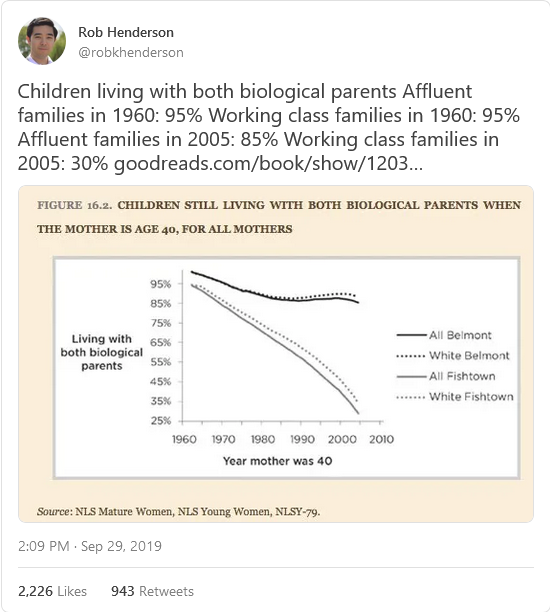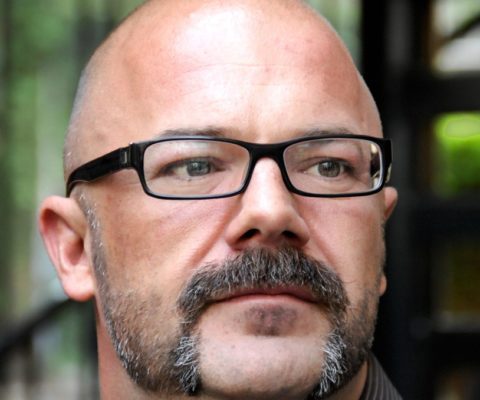World War Two
Published 30 Jan 2023Young, daring, and handsome, the Allied fighter aces of World War Two have captivated the public with their thrilling exploits. Join us as we take a look at the top scorers! Thanks to Curiosity Stream for sponsoring today’s video.
(more…)
January 31, 2023
The Allied Flying Aces of World War Two – Documentary Special
Workshop Tour | Paul Sellers
Paul Sellers
Published 23 Sept 2022Many of you would have seen Paul go from working in a castle to reducing his workspace and ending up working in a single-car garage. This workshop has evolved over the years and is constantly adapting to Paul’s way of working.
Come and look around the workshop as Paul shows you what his shop entails and how it all aids him with his hand tool woodworking.
——————
(more…)
QotD: Religious rituals
I want to start with a key observation, without which much of the rest of this will not make much sense: rituals are supposed to be effective. Let me explain what that means.
We tend to have an almost anthropological view of rituals, even ones we still practice: we see them in terms of their social function or psychological impact. Frank Herbert’s Children of Dune (the Sci-fi miniseries; I can’t find the quote in the text, but then it’s a lot of text) put it wonderfully, “Ritual is the whip by which men are enlightened.” That is, ritual’s primary effect is the change that takes place in our minds, rather than in the spiritual world. This is the same line of thinking whereby a Church service is justified because it “creates a sense of community” or “brings believers together”. We view rituals often like plays or concerts, experiences without any broader consequences beyond the experience of participation or viewing itself.
This is not how polytheism (ancient or modern) works (indeed, it is not how most modern Christianity works: the sacraments are supposed to be spiritually effective; that is, if properly carried out, they do things beyond just making us feel better. You can see this articulated clearly in some traditional prayers, like the Prayer of Humble Access or Luther’s Flood Prayer).
Instead, religious rituals are meant to have (and will have, so the believer believes, if everything is done properly) real effects in both the spiritual world and the physical world. That is, your ritual will first effect a change in the god (making them better disposed to you) and second that will effect a change in the physical world we inhabit (as the god’s power is deployed in your favor).
But to reiterate, because this is key: the purpose of ritual (in ancient, polytheistic religious systems) is to produce a concrete, earthly result. It is not to improve our mood or morals, but to make crops grow, rain fall, armies win battles, business deals turn out well, ships sail, winds blow. While some rituals in these religions do concern themselves with the afterlife or other seemingly purely spiritual concerns (the lines between earthly and spiritual in those cases are – as we’ll see, somewhat blurrier in these religions than we often think them to be now), the great majority of rituals are squarely focused on what is happening around us, and are performed because they do something.
This is the practical side of practical knowledge; the ritual in polytheistic religion does not (usually) alter you in some way – it alters the world (spiritual and physical) around you in some way. Consequently, ritual is employed as a tool – this problem is solved by a wrench, that problem by a hammer, and this other problem by a ritual. Some rituals are preventative maintenance (say, we regularly observe this ritual so this god is always well disposed to us, so that they do X, Y, and Z on the regular), others are a response to crisis, but they are all tools to shape the world (again, physical and spiritual) around us. If a ritual carries a moral duty, it is only because (we’ll get to this a bit more later) other people in your community are counting on you to do it; it is a moral duty the same way that, as an accountant, not embezzling money is a moral duty. Failure lets other people (not yourself and not even really the gods) down.
Bret Devereaux, “Collections: Practical Polytheism, Part II: Practice”, A Collection of Unmitigated Pedantry, 2019-11-01.
January 30, 2023
Crime on Toronto’s public transit system is merely a symptom of a wider social problem
As posted the other day, Matt Gurney’s dispiriting experiences on an ordinary ride on the TTC are perhaps leading indicators of much wider issues in all of western society:

“Toronto subway new train” by BeyondDC is licensed under CC BY-NC-ND 2.0 .
Caveats abound. Toronto is, relatively speaking, still a safe city. The TTC moves many millions of people a week; a large percentage of whom are not being knifed, shot or burnt alive. And so on. We at The Line also suspect that whatever is happening in Toronto isn’t happening only in Toronto, but Toronto’s scale (and the huge scope of the TTC specifically) might be gathering in one place a series of incidents that would be reported as unconnected random crimes in any other city. A few muggings in Montreal or Winnipeg above the usual baseline for such crimes won’t fit the media’s love of patterns as much as a similar number of incidents on a streetcar or subway line.
Fair enough, duly noted, and all that jazz.
But what is happening out there?
Your Line editors have theories, and we’ve never hesitated to share them before: we think the pandemic has driven a portion of the population bonkers. We’d go further and say that we think it has left all of us, every last one, less stable, less patient, less calm and less empathetic. For the vast majority of us, this will manifest itself in many unpleasant but ultimately harmless ways. We’ll be more short-tempered. Less jovial at a party. Less patient with strangers, or even with loved ones. Maybe a bit more reclusive.
But what about the relatively small majority of us that were, pre-2020, already on the edge of deeper, more serious problems? What about those who were already experiencing mental-health issues, or living on the edge of real, grinding poverty?
It’s not like the overall societal situation has really improved, right? COVID-19 itself killed tens of thousands, and took a physical toll on many more, but we all suffered the stress and fear not just of the plague, but of the steps taken to mitigate it. (Lockdowns may have been necessary early in the pandemic, but they were never fun or easy, and that societal bill may be coming due.) Since COVID began to abate, rather than a chance to chill out, we’ve had convoys, a war, renewed plausible risk of nuclear war, and now a punishing period of inflation and interest-rate hikes that are putting many into real financial distress. We are coping with all of this while still processing our COVID-era stress and anxiety.
The timing isn’t great, is what we’re saying.
And on the other side of the coin, basically all our societal institutions that we’d turn to to cope with these issues — hospitals, social services, homeless shelters, police forces, private charities, even personal or family support networks — are fried. Just maxed out. We have financial, supply chain and, most critically, human-resource deficits everywhere. The people we have left on the job are exhausted and at their wits’ end.
This leaves us, on balance, less able to handle challenges than we were in 2020, due to literal exhaustion of both institutions and individuals. Meanwhile, against the backdrop of this erosion of our capacity, our challenges have all gotten worse!
It’s not hard to do the mental math on this, friends. It seems to us that in 2020, the policy of Canadian governments from coast to coast to coast, and at every level, was to basically keep a lid on problems like crime, homelessness, housing prices and shortages, mental health and health-care system dysfunction, and probably others we could add. One politician might put a bit more emphasis on some of these issues than others, in line with their partisan priors, but overall, the pre-2020 status quo in Canada was pretty good, and our political class, writ large, basically self-identified as guardians of that status quo, while maybe tinkering a bit at the margins (and declaring themselves progressive heroes for the trouble of the tinkering).
But then COVID-19 happens, and all our problems get worse. And all our ways of dealing with those problems get less effective. It doesn’t have to be by much. Just enough to bend all those flatlined (or maybe slightly improving) trendlines down. Instead of homelessness being kind of frozen in place in the big cities, it starts getting worse, bit at a time, month after month. The mental-health-care and homeless shelter systems that weren’t really doing a great job in 2020, but were more or less keeping big crises at a manageable level, started seeing a few more people fall through the cracks each month, month after month. Those people are just gone, baby, gone.
The health-care system that used to function well enough to keep people reasonably content, if not happy, locks up, and waitlists balloon, and soon we can’t even get kids needed surgeries on time.
The housing shortage goes insane, and prices somehow survive the pandemic basically untouched.
The court system locks up, meaning more and more violent criminals get bail and then re-offend, even killing cops when they should be behind bars.
None of these swings were dramatic. They were all just enough to set us on a course to this, a moment in time where the problems have had years to compound themselves and are now compounding each other.
Here’s the rub, folks. The Line doesn’t believe or accept that any of the problems we face today, alone or in combination, are automatically fatal. We can fix them all. But we need leaders, including both elected officials and bureaucrats, who fundamentally see themselves as problem fixers, and who understand right down deep in their bones that that is what their jobs are, and that they are no longer what they’ve been able to be for generations: hands-off middle managers of stable prosperity.
Eff the WEF | The spiked podcast
spiked
Published 27 Jan 2023Tom Slater, Fraser Myers and Ella Whelan discuss the World Economic Forum, men in women’s prisons and Facebook’s unbanning of Donald Trump. Plus, Timandra Harkness explains the dangers of the UK’s Online Safety Bill.
(more…)
“… say what you want about the good old Bulletin of the Atomic Scientists, but at least its crappy clock is behaving like a clock these days”
Colby Cosh congratulates the Bulletin of the Atomic Scientists for at least getting their clock moving in the normal direction once again:

Atomic cloud over Hiroshima, taken from “Enola Gay” flying over Matsuyama, Shikoku, 6 August, 1945.
US Army Air Force photo via Wikimedia Commons.
On Tuesday, the Bulletin of the Atomic Scientists (really a foundation that publishes a famous magazine by that name) announced that it would be scooching the minute hand of its renowned “Doomsday Clock” forward. The clock will now read 11:58:30 p.m., midnight minus 90 seconds. The Bulletin does this once a year — at a time, by pure coincidence, when newspaper editors are notoriously starved for copy.
The Doomsday Clock was originally (in 1947) a one-off magazine cover design by Martyl Langsdorf (1917-2013), a landscape artist who was married to one of the Manhattan Project physicists. She happened to set the clock at about seven minutes to midnight, but the visual metaphor was irresistible. As the arms race and nuclear proliferation began, the editors of the Bulletin started rearranging Langsdorf’s clock face as an index of the danger from nuclear exchange.
Even by saying this much I am intruding somewhat on the turf of a colleague, Tristin Hopper, who is eternally preoccupied with the pure stupidity of the Doomsday Clock. As T-Hop never tires of pointing out, you have really lost track of the clock metaphor if you manually wiggle the minute hand backward or forward annually.
Moreover, the face of the clock can at best be considered a lagging indicator. The year 1947 was probably the moment at which the danger of a pre-emptive nuclear strike was greatest. Intellectuals and strategists needed a few years to think through the implications of nuclear weapons: the logic of a first strike was compelling, and might have won the argument in any country that developed nukes until the equilibrium of mutually assured destruction was both established and theorized.
The Bulletin of the Atomic Scientists moved the clock closer to midnight as the world was learning to live with nukes and nuclear proliferation. Eventually the hand was moved backward in 1960 — practically in time for the frightening Cuban Missile Crisis.
The Royal Marines at War: Rough Weather Landing
Royal Marines
Published 31 Aug 2012Rough Weather Landing is a secret film recording of “an experiment by No4 Commando” demonstrating their ability to launch a surprise attack on a seemingly impregnable coastline.
From the comments:
ogdiver
8 years ago
“That’s right lad, you’re going to land from a boat with all the reserve buoyancy of a digestive biscuit onto a rocky shore, in a pounding surf, with a 3″ mortar base plate strapped to your back and tackety boots for swimming. But don’t worry, we’ll give you the the inflated inner tube off an Austin 7 to cling to and we’ll be doing it in daylight for the cameras.” Those blokes were nails.
QotD: Teaching … back in the day
There’s so much truth to this. The “authority figure” thing is especially interesting. As I started in “education” fairly late, I was conspicuously older than most of my graduate school cohort. They had discipline problems in their classes; I never did. This was because I at least looked like an adult, and dressed like one, too. Every other TA was all of three months removed from undergrad, and tried to show up to teach wearing backwards hats and ratty school apparel. The one kid who took my advice and switched to teaching in “business casual” didn’t have a single discipline problem afterward (poor bastard, he no doubt got killed by his peers for “ageism” or something).
Of course, this was so long ago that students used to be unsure how to address me. Most professors had gone “hip” and had students call them by first name, but there were enough crusty old codgers around who insisted on “Dr. So-and-So” that they didn’t assume. After which I started telling them “you can call me whatever you want, but as a general rule life runs smoother if we respect each other’s station. If you know someone has a title, it’s best to use it unless they specifically tell you otherwise, and it’s always good to respect the social distance between yourself and someone who has something you want. So, choose accordingly.” 20 years ago, most of them got it, and addressed me by my title. 15 years ago, I started getting lots of puzzled puppy dog looks (“what’s a ‘social station’?”). 10 years ago, they all just assumed first names were fine, and before I retired I counted myself lucky if I got so much as a “hey dude”.
Meanwhile, as far as the students were concerned, my job went from “trying to teach them something” to “the annoying meat puppet whose presence we have to tolerate until he puts the A+ in the gradebook for record-keeping purposes”.
Severian, responding to a comment on “Movies Made On Mars”, Rotten Chestnuts, 2019-02-04.
January 29, 2023
“That is what Westerners like about Dubai: the indentured servitude. And the weather.”
Tanya Gold at The Free Press:

“Royal Atlantis Resort hotel under construction, Palm Jumeirah, Dubai” by Jpbowen is licensed under CC BY-SA 4.0 .
I went to Dubai once. It is where tyranny meets hyper-capitalism, and it is as awful as it sounds.
I was helping a journalist friend research an article. I spent my days admiring an undersea bedroom in a lagoon and a ski slope inside a mall. At night I would meet trafficked maids, or a woman imprisoned for adultery. I asked an ancient British tourist why he came here for his holidays. He said, “The staff will hold your dick if you ask them.” That is what Westerners like about Dubai: the indentured servitude. And the weather.
Last week, at the grand opening of Atlantis The Royal, Dubai’s newest luxury hotel, Beyoncé gave her first live performance in five years. This gig featured a 48-person all-female orchestra — how feminist — a Lebanese dance troupe, and her daughter. She was reportedly paid $24 million for the occasion.
Her latest album, Renaissance, is, among other things, an homage to black queer culture. She performed no songs from it; how could she in a country where homosexuality is punishable by death? So she sang her back catalog for the equivalent of ten Bugatti Chirons. Oil-rich tyrannies have generous marketing budgets; they’re selling tyranny itself.
What Beyoncé does or doesn’t do for money wouldn’t matter but for the trend of celebrity activism, which insinuates that morality travels with a star like her wardrobe. Beyoncé acolytes say that just by arriving in Dubai she made the city gayer, a kind of subtle protest. Perhaps so subtle that even Dubai’s ruler Sheikh Mohammed bin Rashid — accused of abducting two of his daughters for noncompliance with his wishes, one from England, and another from a ship as she tried to flee Dubai — wouldn’t notice. Did his enforcers reconsider their stance on gayness as they sang along to “Drunk in Love”? Or are they laughing themselves stupid at the PR coup of persuading an until-now gay ally to perform at the opening of a hotel in a country that hates gays?
Dubai, along with Saudi Arabia, wants to reinvent itself as a tourist destination for when the oil runs out. There is nothing understated there — the Burj Khalifa, which is the tallest building in the world; the Palm Jumeirah, a man-made archipelago in the shape of a palm tree. Everything is vast and highly colored, a distraction. It has to be: To enjoy yourself in Dubai, you must close your eyes to suffering. Almost 90 percent of Dubai’s residents are migrant workers, and many of them live in conditions amounting to indentured slavery.
Anzio Begins – Allies Already Pinned Down – Week 231 – January 28, 1944
World War Two
Published 28 Jan 2023Some big news is the Allies amphibious offensive to hit the Germans behind their lines at Anzio in Italy, some other big news is that after nearly two and a half years, the Soviets have broken the siege of Leningrad and their twin northern offensives keep pushing back the enemy. Yet more big news is that the Soviets have managed to surround and cut off over 50,000 Axis troops near Korsun. This is one big week of action!
(more…)
D.C. Public Schools – “if this were a corporation, it would be in liquidation. If it were a house, it would be condemned”
Andrew Sullivan on the latest PR campaign by the disaster that is the DC Public School system:
In my web-reading this week, I stumbled across two statistics that made me sit up straight. The first came from a devastating story last September about my home city’s public schools. I had just watched a slick new video from DC Public Schools about their new “equity” push, which aims to go “beyond students’ academics” and “call out inequities”. The video is full of vague-sounding pabulum — they never define what they mean by “equity”, for example, apart from invoking Ibram X Kendi’s term “antiracism” — but the message is very clear: “equity” is now the central focus of the school district. And it’s a bright new day!
Now check out the data on how the DC Public School system is faring. A key metric is what they call “proficiency rates” — a test of whether the kids are passing the essentials of reading and math at every stage of their education. Overall, only 31 percent of DC students have proficiency in reading and just 19 percent have proficiency in math. Drill down further in the racial demographics and the picture is even worse: among African-American kids, the numbers are 20 percent and 9 percent, respectively. Among black boys, it’s 15 percent and 9 percent. Which means to say that DC Public Schools graduate kids who are overwhelmingly unable to do the most basic reading and math that any employer would need.
This is not a function of money. In the most recent federal analysis: DC spends far more per student — $30,000 a year — than any other state, double the amount in many states across the country.
Let’s put it this way: if this were a corporation, it would be in liquidation. If it were a house, it would be condemned. But since it’s a public school system, it can avoid this catastrophic failure by emphasizing “equity”!
Call this the woke dodge. As they fail to educate kids in the very basics, they brandish a shiny object over there — “Diversity! Equity! Inclusion!” — to distract us. Or they claim that these scores are caused by “white supremacy” or “systemic racism”. Or they argue that now, they are educating “the whole child”. From the DCPS video: “The racial equity lens is a critical component of ‘whole child’ for us because being a whole child means thinking about all of your identities, but certainly the racial identity is a gap in what we’re discussing as a country.” Anything but do the basic job of teaching math and reading as they are supposed to do.
The truth is: they obviously can’t teach those subjects successfully. I’m sure many are good teachers doing their best, and some manage to rescue some of these kids, who often face terrible trauma in their homes and neighborhoods. But the data overall are damning. Imagine spending $30K a year on a student, any kid, in any country, and after 12 years, he still can’t spell or do basic math. It must be really hard to pull that off. And as a reward, you get a shitload of money from the city and the feds to keep it up. Criticize them? You’re a “white supremacist”.
Then there’s the other stat that blew my mind — on the post-BLM surge in murders of African-Americans, including many children. The rise in homicide has cooled off somewhat, as Robert Verbruggen notes. But check this out:
Between the 2018–2019 and 2020–2021 periods, the black homicide rate went up by about 40 percent and the white one by 15 percent — already a glaring disparity. But since the black homicide rate started out so much higher than the white one, this translated to an increase of just 0.4 per 100,000 for whites and 9.7 per 100,000 for blacks — nearly 25 times as large. The increase in the black homicide rate was greater than the total homicide rate for the nation as a whole.
Read that last sentence again.
France’s Ultimate WW1 Selfloading Rifle: The RSC-1918
Forgotten Weapons
Published 14 Sept 2017The French RSC-1917 semiauto rifle was a major step forward in arms technology during World War One, offering a reliable and effective self-loading rifle for issue to squad leaders, expert marksmen, and other particularly experienced and effective troops. No other military was able to field a semiauto combat shoulder rifle during this was in anything but very limited numbers. However, the RSC-1917 definitely had some shortcomings:
– It was just too long, at the same size as the Lebel
– The specialized clip was a logistical problem
– The gas system was fragile and difficult to clean or disassemble
– The magazine cover was easily damagedThese issues were all addressed in the Model 1918 upgrade of the rifle, although it was too late to see active service in the Great War. The new pattern was substantially shorter (both the stock and barrel), it used the standard Berthier 5-round clip, it had a substantially strengthened magazine cover, and a much improved gas system.
Today, we will compare the various features of the 1917 and 1918 rifles, and disassemble the 1918 gas system to show how it worked.
(more…)
QotD: Questions from the Malleus Maleficarum – “Why would a perfectly just God allow witches to exist?”
Almost half the Malleus is devoted to purely philosophical questions surrounding witchcraft. Paramount among these: why would a perfectly just God allow witches to exist?
The answer probably has something to with the Devil. And you can probably get part of the way by saying that God has a principled commitment to let the Devil meddle in human affairs until the End of Days. But then you get another issue: the Devil was once the brightest of angels. He’s really really powerful. Completely unrestrained, he can probably sink continents and stuff. So why does he futz around helping elderly women kill their neighbors’ cattle?
Put a different way, there’s a very narrow band between “God restrains the Devil so much that witchcraft can’t exist” and “God restrains the Devil so little that witches have already taken over the world”. Prima facie, we wouldn’t expect the amount God restrains the Devil to fall into this little band. But in order to defend the existence of witchcraft, Kramer has to argue that it does.
His arguments ring hollow to modern ears, and honestly neither God nor the Devil comes out looking very good. God isn’t trying to maximize a 21st century utilitarian view of the Good, He’s trying to maximize His own glory. Allowing some evil helps with this, because then He can justly punish it (and being just is glorious) or mercifully forgive it (and being merciful is also glorious). But, if God let the Devil kill everyone in the world, then there would be no one left to praise God’s glory, plus people might falsely think God couldn’t have stopped the Devil if he’d wanted to. So the glory-maximizing option is to give the Devil some power, but not too much.
Meanwhile, the Devil isn’t trying to maximize 21st century utilitarian evil. He’s trying to turn souls away from God. So although he could curse people directly, what he actually wants is for humans to sell their soul to him in exchange for curse powers. So whenever possible he prefers to act through witches.
Scott Alexander, “Book Review: Malleus Maleficarum“, Astral Codex Ten, 2022-10-27.
January 28, 2023
What made the Queen so good at her job?
Lindybeige
Published 24 Sept 2022Queen Elizabeth II of England (I of Scotland) was very good at her job, but why was this? What are the ideal qualities of a modern constitutional monarch? I stand in a dark shirt and talk.
End photograph by Jazzy Lemon.
It has been pointed out to me that the officers who attempted a coup in Spain in 1981 were ‘Civil Guard’ and not ‘army’ as I said. This is a distinction which exists in Spain but not in Britain.
(more…)





